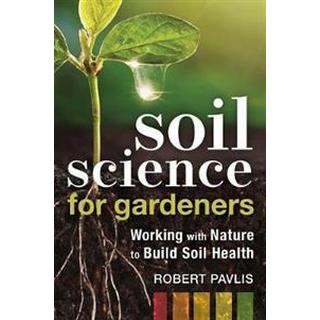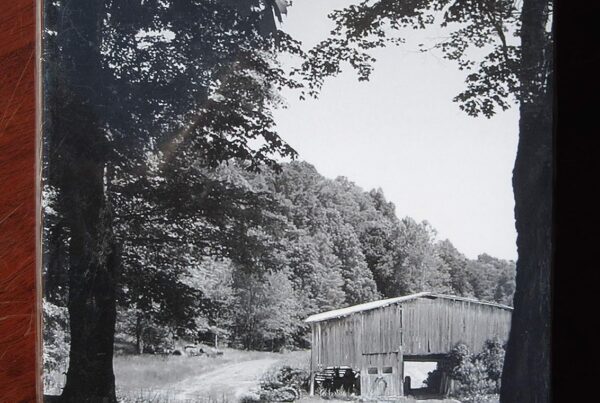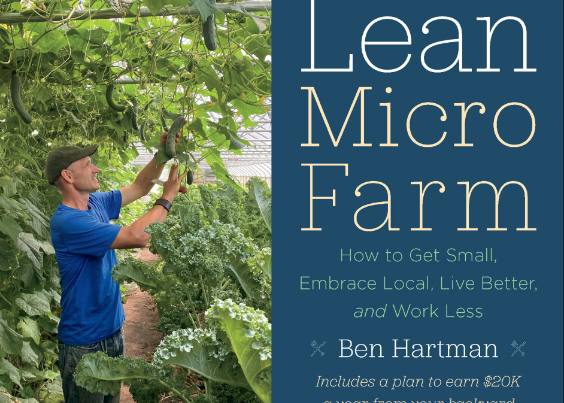
I recommend this book to all gardeners who have hesitated to open a soil science text for fear of dry incomprehensible overloads of numbers. Robert Pavlis explains how your garden grows, and dashes cold water on false myths that may have been wasting your time and limiting your success for years! He leads us to a better understanding, including on a microscopic level, of soil biology, chemistry, physics, geology and ecology and to a place of wonder and curiosity at the everyday functioning of crops and soils.
This new comprehension can lead us to do right by our plants and our gardens, leading to healthier plants and higher yields. Robert writes in plain language, as a gardener with over 45 years of experience. He is the author of those Garden Myths books you might have seen. Perhaps, like me, you paid them little attention, thinking your own knowledge was fact-based. Even so, like me, you might find you had been holding onto some anti-facts (mine was that I believed compost is acidic – not so!). This book aims to have us understand real soil and make real improvements, via a Soil Health Action Plan at the end of the book.
The three sections of the book are Understanding Soil, Solving Soil Problems, and A Personalized Plan for Healthy Soil. A satisfying, logical sequence. Read the sections in the order presented! Robert says it’s very easy to grow plants if you understand the soil which anchors them, feeds them and provides the air and water they need to survive. With a solid understanding of what’s going on, you won’t need to memorize rules.
The 2016 definition of soil, by the Soil Science Academy of America is “Soil is the top layer of the Earth’s surface that generally consists of loose rock and mineral particles mixed with dead organic matter.” A rather bland underselling of what soil accomplishes. Here comes myth-bust #1: “Soil is not alive. It does not need to eat or breathe.” “The whole idea that soil is a living organism that requires similar attention to animals is completely false and leads to many poor recommendations for managing soil.” No, don’t give up here! It’s not the soil but the ecosystem of the soil and all the living organisms in and on it that holds the life. The ecosystem contains life, but is not itself alive.
Air and water are critical for good plant growth, about 25% of each. A simple, startling truth. The sand, silt and clay we might worry about make up another 45%, and 5% organic matter might fill out the total. A large tree can remove up to 100 gallons (400 liters) of water a day, discharging most of it into the air as water vapor. As the water leaves the soil, air is pulled in to fill the spaces. Roots pull the oxygen in, day and night, to convert sugars into energy. Were you also lead to believe that plants photosynthesized by day and respired only by night?
Did you know (I hadn’t thought about it) that “soil pH” is really an average of the pH of the water in the soil, and a spot with organic matter and lots of bacterial activity will have a very different pH from a spot with less organic matter? The rhizosphere (the area right around a plant’s roots) can have a very different pH from the soil solution further away. Plants can grow in alkaline soil because their roots are actually growing in acidic conditions. The nitrogen-fixing bacteria on legume roots cause the plant to release hydrogen ions, making the rhizosphere more acidic. To some extent, our efforts to change the soil pH can be undone by our crops and weeds! A soil property called buffer capacity lets the soil absorb materials at different pH and maintain its same level. Peat moss is acidic, but it does not acidify alkaline soil. The soil in the rhizosphere can be 2 pH units different from the soil around. This is usually written about in rather magical terms, but here it is in plain language.
Roots grow just fine where there is enough phosphorus. Adding more at transplanting doesn’t help, and can hinder. Visual plant symptoms can predict possible deficiencies, but are not a reliable diagnosis. Purple leaves may indicate phosphorus deficiency or cold temperatures, high light intensity, pest damage or lack of water. Or a nitrogen shortage reducing the plant’s ability to absorb phosphorus. There’s much that we don’t know!
Pay attention to the Cation Exchange Capacity – the measure of the soil’s ability to hold cations – because many plant nutrients are cations. You can increase the CEC by increasing the clay content, increasing the OM or increasing the pH. Read more in this book.
Have you ever thought about the “free” nitrogen from legume root nodules? Rethink of it as “homegrown” or “solar” rather than simply magic and free, because the leguminous plant may use up to 20% of the sugars produced during photosynthesis, to feed the bacteria.
Don’t justify your adherence to organic gardening by falsely claiming that synthetic fertilizers kill bacteria. Bacteria feed on both synthetic and organic fertilizers. This book challenges us to find the factual basis for choosing to grow organically, making us stronger advocates.
The bacteria chapter is followed by a chapter on fungi. Fungal spores are everywhere, even the Antarctic. Fungi are crucial for cleaning up plant litter on the soil surface. They grow above-ground hyphae which can penetrate dry leaves or wood chips and move the nutrients deep into the soil. Bacteria can’t tackle such tough stuff! 150 species of fungi capture and digest nematodes.
Why is organic matter important? This chapter explores the chemical and biological effects of organic matter on soil. Soil contains three forms of organic carbon: the living (15%), the dead and the very dead (stable humus and charcoal). Increasing the level of organic matter in the soil can increase aggregation, improve water infiltration (reducing runoff), increase aeration, increase water-holding capacity, improve tilth of clay soils, reduce crusting, and improve the size and distribution of the pore spaces. Those are just the physical effects. It will also increase the cation exchange capacity, increase the availability of nitrogen, boron, molybdenum, phosphorus and sulfur, and increase the microbial activity and diversity.
Often we think about adding partially decomposed OM such as compost and manure. We should face the reality that compost tends to have low levels of nutrients (maybe 1:1:1). The big value of these is in providing food for microbes, short-lived beings that provide a constant supply of fresh OM, multiplying its value. Partially decomposed compost takes about five years to finish decomposing, during which time it slowly releases nutrients. This gradual steady supply is what crops need. The humus left at the end is a complex molecular mixture of carbon, hydrogen and oxygen, resistant to further decay.
The initial effect of adding fresh OM (not composted OM) is an explosion of microbial reproduction, feeding and death. The microbes use nitrogen, which can cause plants to suffer a shortage. It takes time for a new balance to be achieved, providing adequate N for the plants. The needs for the N can encourage gardeners to add so much compost that the P level is too high, which can bring death to mycorrhizal fungi, leading to roots driving deeper to access their own P from the soil directly. We have very high soil P, a result of misunderstanding soil test limits. I have worried about it, then read more and stopped worrying. Soil P is pretty stable. If you are not leaching P into a waterway, it just stays in your soil until a plant need it. We switched to using less compost and more cover crops where we could. We were already using a lot of cover crops – it’s not like we were slouches in that department! After more time, I settled on accepting our situation, and as the plants show no sign of P-caused problems and our soil is bursting with earthworms, it doesn’t affect us much.
I mentioned at the beginning that I learned that finished compost is alkaline, not acidic. In the initial composting stage, acidity happens. Then fungi thrive, and decompose the tough lignin and cellulose, causing the pH to rise and bacteria to take over. Compost-making has lots of myths! Poorly understood science makes them grow, I suppose. Bokashi composting, for example (more of a fermentation than a composting process) is based on the idea that fermented material decomposes faster, although it’s unclear if this is really true. “The best method of composting is the one that you do and continue to do because you like doing it. Any form of composting is better than taking yard waste to the curb.”
The Rhizosphere chapter is fascinating! Root exudates can restrict the growth of competing roots, attract microbes into symbiotic relationships, Change the chemical and physical properties of the soil solution and the soil, and make nutrients more available. Bacteria make explosive population growth as they feed on exudates. Then their predators, nematodes and protozoa, join the party. The soil water around the roots becomes a nutrient soup. By photosynthesis, the plants produce the attractive exudates that the soil food web turns into plant nutrients right where the roots can efficiently hoover them up. Plants are active in seeking nutrients, not passive recipients. Not to say they have knowledge, or think and plan. It’s a matter of chemical reactions controlled by enzymes with the capacity to change their activity based on the presence or absence of chemical triggers. Let’s marvel at the reality! We don’t need fairy stories!
The second section of the book, Solving Soil Problems, starts with identifying the problems, and works through techniques affecting the soil, chemical and microbe issues, increasing organic matter and structural problems. We are not feeding plants, we are replacing missing nutrients in the soil, so they can take the nutrients they need. The solution will depend on your soil, so a “tomato fertilizer” is not going to be what tomatoes need in every soil. If you plan to top up the missing nutrients, get a soil test to learn what those are. But if you plan to apply manure or compost everywhere as your only amendment, your money is wasted on a soil test. If you add compost every year and return cover crops, organic mulch and your plant debris to the soil, and your plants are mostly growing well, you probably don’t need to add any other fertilizer to your garden. This alarmed me a bit. What about boron shortage, which happens here? Yes, if you are a farmer or market gardener, yields do matter and soil tests (free for commercial growers in Virginia) will be worthwhile. But for a home gardener, or a landscape gardener, yields might not be at the top of your list. Robert explains various tests, and gives his take on how useful they are. The information here can save a lot of confusion and wasted effort.
In the techniques chapter, the author explains the dramatic difference in available nitrogen in a cultivated garden and a no-till one. No-till can supply up to five times the nitrogen, because tilling adds more air into the soil, increasing the microbial activity, burning up the OM. There is a useful chart comparing the effects of fertilizer, compost and wood chips on the soil. We’ve all learned not to bury wood chips in the soil, where they use up the nitrogen while decomposing. But on the surface they can do wonders.
Crop rotation has come under scorn recently from commercial growers who are focused on maximizing yield and profit for their time on small areas of land. Sure, salad mix and baby spinach can rake in the money. But generations of farmers have learned to grow different types of crops each year in a particular spot. This can increase yields 10-25%, even though we are not sure why. Studies have shown it’s not simply nutrient availability. It could be pH changes freeing up more nutrients, or microbe biodiversity, or differing root growth granting access to more depth than the current crop alone can achieve. Rotated crops are more drought resistant and make better use of nitrogen. Research is needed.
As I was happily digesting this book I was brought short by this mnemonic that still puzzles me: “If you have trouble remembering whether P stands for phosphorus or potassium, remember that these nutrients are listed in alphabetical order. Phosphorus comes before potassium in the alphabet, and so P comes before K.” Um, K comes before P, last time I looked. Confusing.
Does rock dust add nutrients? No evidence, says Robert. Do not be beguiled by mineral products claiming to add 74 minerals to your soil. Plants might only use 20 of them. More is not better! Beware fad products such as biostimulants and probiotics. Plants cannot use vitamin B1. What about compost tea? Yes, it adds nutrients, but claims that the included microbes work wonders are not supported by science: test results are very mixed, including worse. Sometimes we are too gullible! Milk, molasses: they add nutrients but no special magic. Fermenting something cannot add nutrients – it could make some more available, although that isn’t proven either. The fungal and bacterial populations increase, but are the species nutritious ones or pathogenic ones?
The gardener’s goal is to farm healthy microbes, even though they are too small to see. Use the state of the soil and the health of the plants as indicators of the health of the microbes. Supply OM, water and you’re on the right track. It has been proved useful to add rhizobium legume inoculant if you haven’t grown legumes for some years. Fungal inoculation of soybeans in low phosphorus soil will be effective. Not otherwise.
The author’s general practice is to improve the soil environment to help existing microbes. There is a list of 7 general ways to do that. There is a whole chapter on increasing OM, using what’s local and cheap. Coir is a waste product, but its production causes environmental damage to local water supplies (large amounts of sodium have to be leached out).
Biochar, one of the new “Garden Wonders”, has claims to make big improvements to the soil food web. Most of the biochar studies have been conducted in labs, not on farms. Even then, 50% of the studies report higher yields, 20% report no change, and 30% report a decrease. There are probably better ways to spend your money!
What about gypsum? I believed the common advice to use it to break up clay soils. Mostly this myth is not supported by evidence. Gypsum can have some negative effects. Add more OM instead. Likewise for improving sandy soils: add more OM.
The final section of the book is a set of worksheets and instructions to help gardeners improve the soil health where they are. This is a slow process, so start soon! Robert has also made the forms available on his website www.gardenfundamentals.com/soil-book-forms. First assess your soil, then make an action plan, then record your progress.
I recommend this book for all sustainable/regenerative/organic gardeners and small-scale farmers, and even large-scale farmers who realize there are gaps in their understanding of soil science. This book is very accessible, user-friendly and full of soil-based common sense. Winter is a good time to make new plans!
Robert Pavlis has two websites: www.gardenmyths.com and www.gardenfundamentals.com as well as a YouTube channel www.youtube.com/Gardenfundamentals1
Book Review by PAM DAWLING
Soil Science for Gardeners, by Robert Pavlis, New Society Publishers, 2020. 208 pages, with charts and diagrams, $18.99.
Purchase this book HERE and 1/2 of the net proceeds from your purchase will come back to support VABF!
VABF has been working with Indy Bookseller, Stone Soup Books, based in Waynesboro, Virginia, as our conference bookseller and now to support us as our online bookseller!
Why purchase from an independent bookseller? Because we love books, learning, stories as much as you do! We support writers, our local communities, creativity and story-telling in it’s many forms whether fiction, nonfiction, video, audio, art or print. We look for ways to discover new stories/thinking and re-discover old and then we tell others about it so it can be shared. We provide a place in our community for people to seek out & hear the voice of another. When you purchase a book from your Indy bookseller, you’re using your economic voice to craft what you value, what your community looks like.
Stone Soup Books specializes in books about farming, agriculture, and sustainable living because of our commitment to good food and simpler living.






